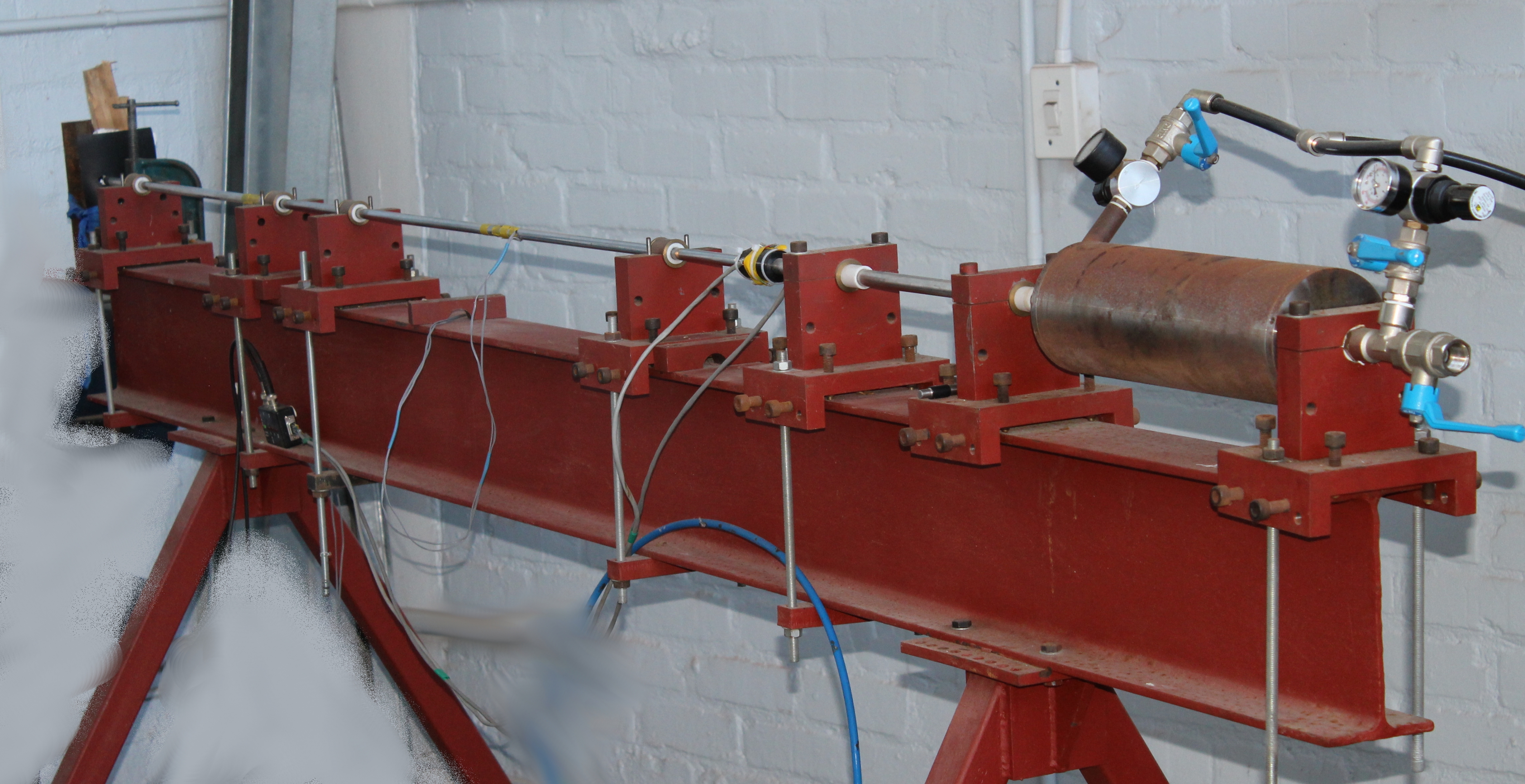Hopkinson Pressure Bars (HPB) are used to measure forces and velocities at very high rates, where conventional instruments aren't suitable. The HPB, invented by and named for Bertrand Hopkinson in 1914, was originally utilised to measure pressures associated with small projectile impacts and detonations of small explosive charges. The Split Hopkinson Pressure Bar (SHPB), was devised by Kolsky and Davies, to measure the stress-strain response of a small specimen sandwiched between two HPB.

BISRU makes use of HPB in a variety of configurations:
- Conventional Compression SHPB
- Tensile SHPB
- Miniaturised Compression SHPB
- Direct Impact HPB
- Flexure (Bending) HPB
- Spalling HPB
All of the HPB arrangements at BISRU make use of a common high speed data acquisition and processing arrangement. The stress waves are measured with strain gauges on the bars, that are completed in temperature compensated half-bridges. The strain gauge signals are run through custom amplifiers, with gains that are easily varied between 100 and 1000. The amplifier gain is constant up to 100 kHz and gain drop off / phase shift is mapped up to 1 MHz. The analog signals are digitally sampled at 16 bit resolution and 10 MSa/s on each channel, before being digitally stored and processed.
